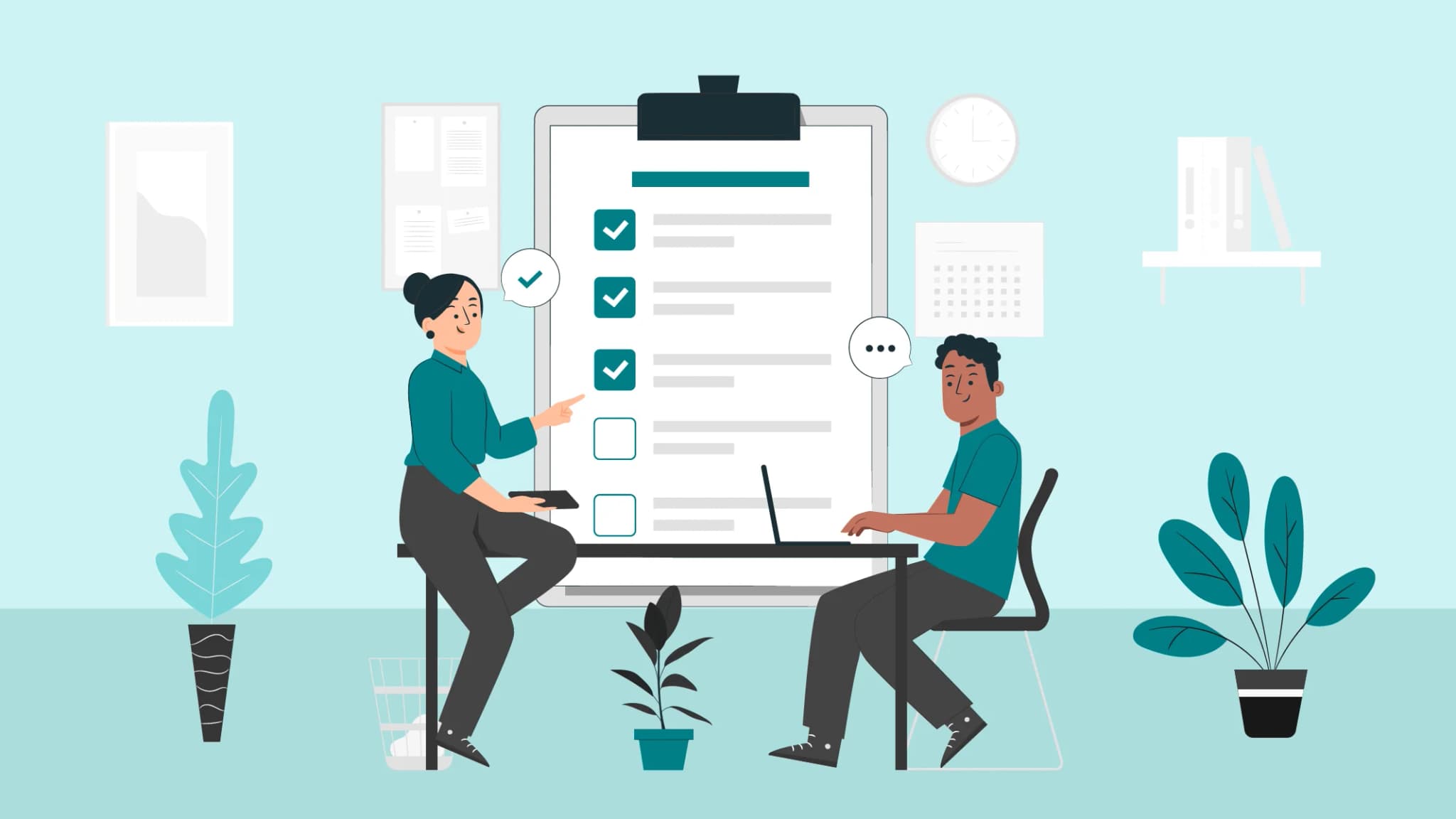
Team AdvantageClub.ai
August 11, 2025

HR analytics, powered by AI, is a game-changer for organizations. It’s not just about converting data into insights but also about improving decision-making and streamlining workforce management. Organizations can utilize AI’s full potential in HR analytics by integrating AI-powered tools like employee sentiment analysis and chatbots, fostering a data-driven culture, and providing ongoing AI training for HR teams.

The Growth of AI in HR Analytics
- Historical Context: AI in HR analytics began in the 1980s with basic tools to improve recruitment and talent management. Companies employed manual data entry and rudimentary software for their processes. The real transformation began in the 21st century with machine learning and predictive analytics. Today, AI is integral to HR, driving strategic decision-making and creating a personalized employee experience.
-
Technological Advancements:
AI's growth in HR analytics has been driven by milestones such as sophisticated predictive modelling algorithms and the integration of AI with cloud-based HR systems. Innovations like natural language processing enable AI to analyze unstructured data, such as employee feedback and social media interactions, providing deeper insights into employee sentiment. The rise of AI-powered HR platforms has accelerated this growth, offering tools for tasks from resume parsing to predictive attrition analysis, making HR processes more efficient and data-driven. -
Increased Adoption:
Organizations are integrating AI into HR analytics to improve decision-making and efficiency. The complexity of HR tasks and the competitive business environment are driving the adoption of AI. Its real-time insights and task automation make it indispensable for HR departments globally. -
Impact on HR Functions:
AI has significantly impacted HR functions, streamlining talent acquisition, analyzing employee engagement, and enabling continuous performance monitoring. The integration has led to more informed, data-driven decisions and improved organizational outcomes.
AI's Power in HR Analytics
1. Processing Complex Datasets
The spectrum of HR data includes a wide range of information, such as demographics, performance reviews, exit interviews, and more. AI algorithms, known for their high efficiency and precision, can handle these extensive datasets. It can transform the way HR professionals process complex data.
Analyzing extensive recruitment data using AI allows identifiable trends in successful hires to be determined, leading to improved candidate training. For example, AI may reveal that previous high-performing individuals commonly possessed specific skills or educational backgrounds. This valuable understanding enables HR to focus its recruitment efforts on attracting similar candidates, increasing the likelihood of successful hires.
Furthermore, AI excels at uncovering hidden trends and correlations missed by manual analysis. This can include subtle patterns in employee engagement based on demographics or department. By identifying such trends, HR can proactively address potential issues before they escalate.
2. Predictive Analytics and Forecasting
Artificial intelligence has an important ability to predict future trends. By looking at past data, AI can forecast potential future outcomes. These forecasts can assess turnover risk, identify talent gaps, and predict skill shortages within a company. For instance, AI could predict a significant increase in resignations within a specific department. This provides the HR team with valuable insight to create tailored strategies for retaining employees. This emphasizes the strategic importance of AI in HR analytics.
So, using artificial intelligence is essential for proactive HR decision-making. It allows HR professionals to use predictive analytics to anticipate future workforce needs and take proactive measures to address them. With AI’s forecasting capabilities, HR teams can stay ahead and be well-prepared to meet any potential challenges.
3. Automated Reporting and Visualization
HR metrics are often complex to understand. AI simplifies this challenge by generating insightful reports and visual data. These reports transform raw data into clear and concise visuals, making it easier for HR professionals to grasp key trends.
For example, imagine an AI-powered dashboard that showcases trends in employee engagement across different demographics. HR can instantly see if engagement is dipping among younger employees or a specific department. This visual representation allows for the immediate identification of potential issues and the swift implementation of targeted solutions.
4. Personalized Learning and Development
AI is revolutionizing the way organizations handle learning and development by creating tailored learning paths. By analyzing an employee’s current skills, career goals, and performance data, AI can suggest particular courses, resources, and training modules that are in line with their development objectives. This method ensures that each employee undergoes a personalized learning journey, enhancing the relevance and effectiveness of their training.
Adaptive learning, powered by AI, goes beyond personalized development; it adjusts the content and pace of learning based on real-time feedback and performance. As employees engage with training materials, AI algorithms assess their comprehension and adapt the difficulty and delivery method accordingly. This dynamic approach caters to different learning styles and speeds. Adaptive learning ensures that all employees, regardless of their starting point, can master the skills they need to excel in their roles.
AI-enabled skill gap analysis helps organizations understand the competencies their workforce lacks. AI can identify gaps that require targeted training by comparing employees’ current skills with those needed for future roles or strategic objectives. This insight enables HR departments to plan and implement learning and development initiatives proactively. They can close these skill gaps, ensuring that the organization remains competitive and prepared for the future.
Finally, both employees and employers need to track progress in learning and development. AI enhances this process by continuously monitoring an employee’s advancement. The tracking is done through their learning path, offering real-time analytics on their performance and engagement. This data-driven approach enables HR professionals to identify trends, provide timely feedback, and adjust learning strategies as needed. The process ensures that employees stay on track to meet their development goals. Moreover, progress tracking through AI helps to demonstrate the ROI of learning initiatives, aligning them with broader organizational objectives.
5. AI and Talent Acquisition Analytics
The job market is very competitive. AI could change how companies hire new employees. It can analyze candidate profiles and skills and match them with job openings, helping make hiring fairer and more efficient.
Think about an AI that finds potential candidates based on job requirements. It could save time by picking out the best people from all the resumes. Also, based on past data, AI could predict how well a candidate might do. This could help companies hire faster and with less risk.
Using AI in hiring should improve the quality of new hires. It will speed up the time it takes to fill open positions and make the whole recruitment process easier.
6. AI and Workforce Planning Analytics
Planning for the future workforce is crucial for any organization’s success. Artificial intelligence can help by accurately predicting future workforce needs and optimizing resource allocation.
Imagine an AI tool that analyzes existing data to predict future talent needs in specific departments based on expected growth or changes in technology. This would let HR plan ahead and create programs to train employees, ensuring the right people are available for future needs.
AI in workforce planning offers many benefits. It helps adjust to changing business needs more easily and could save on cost.
7. AI and Diversity, Equity, and Inclusion Analytics (DEI)
Creating a workplace that supports diversity, fairness, and inclusion is not just the right thing to do, but it also benefits the business. AI can help improve diversity, equity, and inclusion strategies.
For example, picture an AI-powered tool carefully checking hiring data to find any biases in the recruitment process. This helps HR teams to quickly fix any issues and make sure that the selection process is fair for all candidates. Also, with AI, managers can keep track of progress toward diversity goals and see how different inclusion initiatives are actually making a difference.
8. AI and Employee Performance Analytics
The performance of employees is crucial for the success of any organization. AI can thoroughly analyze employee performance data and provide valuable insights for HR and managers. Through the use of AI, organizations can uncover patterns in employee performance and even forecast potential performance issues.
Early identification of struggling employees can enable HR to implement personalized interventions. They can employ coaching or specialized skill development programs for the employees. Furthermore, AI can be used to enhance performance management strategies. It can pinpoint areas where employees excel and areas where further development is needed.
How HR Analytics & Insights Help in Better Decision-Making
HR analytics is revolutionizing how organizations make workforce decisions. These tools analyze extensive employee data to provide actionable insights that lead to strategic and informed choices. Whether in recruitment, retention, or employee engagement, people analytics helps leaders move beyond intuition, basing decisions on solid evidence. This shift not only improves HR decision quality but also aligns actions with broader business goals, encouraging a data-driven culture.
AI-powered analytics enable HR teams to collect data from various sources, such as surveys, performance metrics, and engagement scores, which can uncover hidden trends. This data-driven approach empowers HR leaders to forecast outcomes, tackle challenges proactively, and minimize bias. For instance, predictive analytics can anticipate employee turnover, enabling preemptive retention strategies. Basing decisions on data enhances the overall effectiveness of HR initiatives.
It’s important to remember that accurate data is essential for making effective HR decisions. People analytics powered by AI can improve the accuracy of data collection and the insights derived from it, ensuring that decisions are based on the most reliable information. For example, precise performance data can lead to fairer evaluations, resulting in more equitable promotions and compensation. As AI enhances data models, it also improves the accuracy of predicting HR trends like workforce planning. This ultimately leads to a better decision-making process that benefits both employees and the organization, resulting in more positive outcomes.
From Insights to Action: The HR Advantage
1. Data-Driven Decision-Making
2. Improved Talent Management
3. Reduced Costs and Increased ROI
The Future of HR Analytics with AI
The field of HR analytics is heading towards an exciting future with several transformative trends. One notable advancement is the use of AI to analyze employee sentiment. By looking into communication and feedback, AI can accurately assess overall sentiment and detect possible issues, such as low morale or burnout.
Another emerging trend is the implementation of AI-powered chatbots for HR support. These chatbots are designed to provide employees with round-the-clock access to HR information. They address all common queries, thereby allowing HR professionals to focus on more complex matters.
Responsible AI Development and Data Privacy
Ensuring Ethical and Responsible AI in HR Analytics
- Data Quality and Bias Mitigation:
To ensure that AI algorithms are accurate and unbiased, it’s crucial to use data that represents a diverse workforce. This involves carefully examining the data used to train AI algorithms to minimize bias. Also, AI ensures that it accurately reflects the entire employee population. - Transparency and Explainability:
HR professionals should have a thorough understanding of how AI algorithms make decisions. This requires clear explanations of how AI reaches its decisions, overcomes human oversight, and guarantees fair treatment of all employees. Ensuring transparency is crucial for building trust in the HR analytics process driven by AI. - Regulatory Compliance:
Adhering to relevant data privacy regulations is vital when collecting, storing, and analyzing employee data. It’s important to ensure that all HR analytics processes comply with legal and ethical standards. This is to ensure data privacy and protection. The task includes staying up to date with evolving regulatory requirements. They help maintain a high standard of compliance in AI-driven HR analytics.
How Can AdvantageClub.ai Help?
AdvantageClub.ai is a pioneer in using AI to enhance HR analytics. We offer a comprehensive platform that optimizes employee rewards and recognition program. With advanced AI-powered tools, AdvantageClub.ai helps organizations make data-driven decisions that boost employee engagement, satisfaction, and retention.
Our platform uses AI to enable organizations to anticipate trends and address potential issues before they become problems.
AdvantageClub.ai’s AI capabilities can develop personalized recognition programs that deeply connect with their employees. Our platform ensures that these programs effectively motivate and engage employees.
AdvantageClub.ai offers real-time analytics as a key feature. The platform continually monitors the effectiveness of rewards and recognition programs, allowing HR leaders to make timely adjustments for maximum impact. Additionally, the analytics tools help track the ROI of these initiatives, providing a clear connection between employee engagement efforts and business results.
Our platform is scalable, catering to the needs of small teams as well as global workforces. The AI-driven approach ensures that the platform can handle complex data and provide relevant insights across various regions and departments.
In a data-driven world, AdvantageClub.ai is a vital partner for HR professionals looking to revolutionize employee engagement through AI-powered analytics. To learn more, visit AdvantageClub.ai’s Employee Rewards and Recognition Program.





